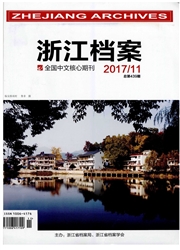
欢迎您!东篱公司
退出

 中文摘要:
中文摘要:
清水江流域分关文书在长期的演化过程中形成了比较规范的书写程式,主要包括序言、正文、落款。自清代以降,其书写程式有一个逐渐固定化、模式化、法律化和简明化的趋向,凸显了清水江流域的少数民族特色,充分体现了公平原则。分关文书程式的完整和其承载的财产信息等,体现了苗侗人民的智慧,至今仍有重要的法律文书价值和文献史料价值。
 英文摘要:
英文摘要:
After a long-term evolution, the writing form of family-dividing property documents in the Qingshuijiang River Valley areas came into a relatively standardized style, consisting of the preface, text, and signature. Since the Qing Dynasty, the form gradually tended to be a fixed, patterned, legalized and concise program, reflecting ethnic features in the areas and fully embodying the principle of fairness. The integrity and property information in the documents, the wisdom of the Miao and Dong, still have their important values in terms of legal data and historical literature.
 同期刊论文项目
同期刊论文项目
 同项目期刊论文
同项目期刊论文
 期刊信息
期刊信息
